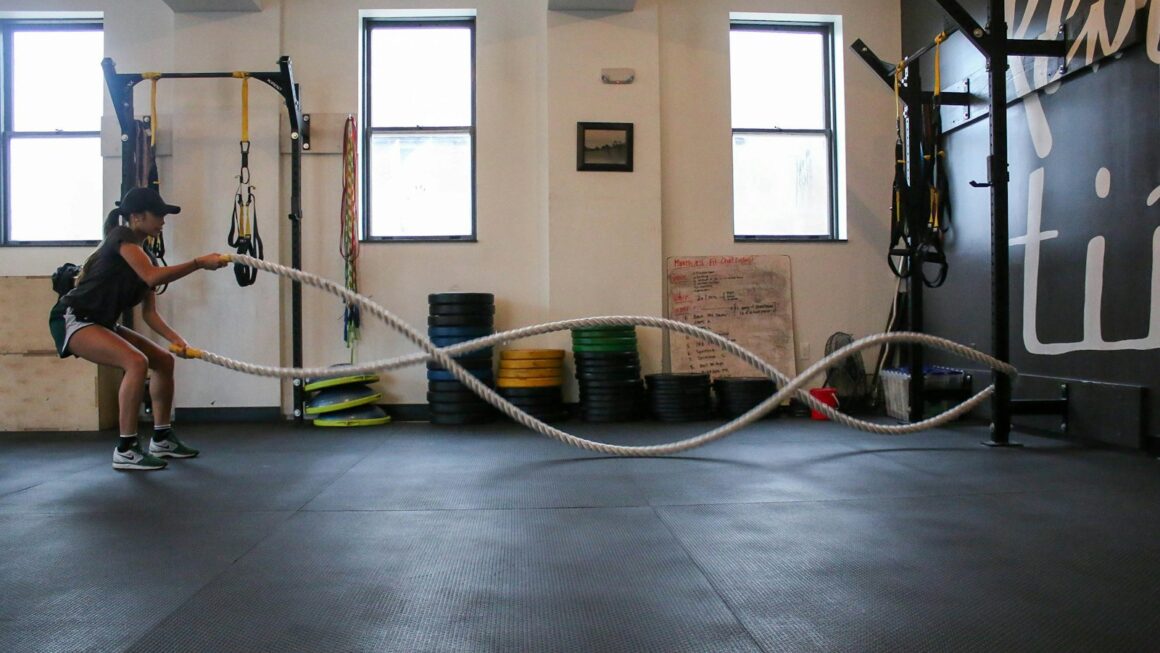With the constant evolution of technology, the fitness industry has witnessed remarkable advancements in recent years.
From smart workout equipment to interactive fitness apps, these innovations have revolutionized the way individuals track and improve their physical activity. Wearable devices such as fitness trackers and smartwatches now offer real-time feedback on heart rate, calorie burn, and even sleep patterns, empowering users to make more informed decisions about their health and fitness goals.
Additionally, virtual reality (VR) technology has made its way into the realm of fitness, providing users with immersive workout experiences from the comfort of their own homes. Virtual training programs and interactive fitness games not only make exercise more engaging but also help users stay motivated and committed to their fitness routines. As technology continues to advance, the possibilities for incorporating innovative solutions into fitness regimens are endless, paving the way for a more connected and personalized approach to achieving optimal physical health.
Nutritional Trends for Optimal Performance
Nutritional trends for optimal performance are constantly evolving in the health and fitness industry. Incorporating personalized nutrition plans tailored to individual needs and goals is a key focus for maximizing athletic performance. Fueling the body with a balanced combination of macronutrients such as carbohydrates, proteins, and fats is essential for sustaining energy levels and promoting muscle recovery.
Moreover, the emphasis on mindful eating and intuitive nutrition continues to gain traction among athletes seeking peak performance. This approach encourages individuals to listen to their bodies’ hunger and fullness cues, fostering a healthy relationship with food while supporting athletic endeavors. By prioritizing nutrient-dense whole foods and staying hydrated, athletes can enhance their performance and overall well-being.
Latest Research on Exercise Efficiency
Exercise efficiency has been a subject of substantial research in recent years, with studies continuously striving to uncover the most effective ways to optimize workout routines. One key focus has been on high-intensity interval training (HIIT), which has gained significant attention for its potential to deliver maximum results in shorter time frames. Research findings suggest that HIIT can significantly improve cardiovascular health, boost metabolism, and enhance overall fitness levels when compared to traditional steady-state cardio exercises.
Another area of interest in exercise efficiency research centers around resistance training techniques. Recent studies have revealed that incorporating compound movements, such as squats, deadlifts, and bench presses, can lead to greater muscle activation and strength gains compared to isolation exercises targeting specific muscle groups. By understanding and implementing these research-based strategies, individuals can make the most out of their workout sessions and achieve their fitness goals more effectively.
Innovations in Wearable Fitness Devices
Wearable fitness devices have seen significant advancements in recent years, offering users a plethora of features to enhance their workout experience. From tracking heart rate and steps taken to monitoring sleep quality and calories burned, these devices provide valuable insights into one’s overall health and fitness levels. The integration of advanced sensors and algorithms in these wearables allows for more precise measurements and data analysis, empowering individuals to make informed decisions about their fitness routines.
Moreover, the rise of smartwatches and fitness trackers with built-in GPS capabilities has revolutionized the way people monitor their outdoor activities. These devices not only track distance and pace accurately but also map out routes, making it easier for users to explore new running or biking paths. Additionally, the incorporation of smartphone connectivity in wearable fitness devices enables seamless data synchronization and access to a range of fitness apps, offering users a comprehensive approach to managing their health and wellness goals.
Impact of Virtual Training Programs
Virtual training programs have revolutionized the fitness industry by providing convenient and accessible workout options for individuals globally. Through live-streamed classes, on-demand sessions, and interactive platforms, users can engage in guided exercises from the comfort of their own homes. This modern approach to fitness training has enabled individuals to overcome barriers such as time constraints, travel limitations, and busy schedules, making it easier for them to stay consistent with their workout routines.
Furthermore, virtual training programs have proven to be effective in increasing motivation and accountability among users. With features like progress tracking, goal setting, and virtual communities, individuals are more likely to stay committed to their fitness goals. The ability to connect with trainers and fellow participants in real-time fosters a sense of support and camaraderie, encouraging users to push themselves further and achieve better results.

Updates on Recovery Techniques
Effective recovery techniques play a crucial role in optimizing athletic performance and minimizing the risk of injury. As athletes push their bodies to the limit during training sessions and competitions, the importance of incorporating proper recovery strategies cannot be overstated. In recent years, advancements in recovery technology have revolutionized the way athletes approach their post-exercise routines.
One of the latest trends in recovery techniques is the use of compression therapy to enhance circulation and reduce muscle soreness. Compression garments, such as sleeves, socks, and pants, apply pressure to specific areas of the body, promoting faster recovery by flushing out lactic acid and reducing inflammation. Many athletes have reported noticeable improvements in their recovery time and overall muscle soreness after incorporating compression therapy into their post-workout routines.
Trends in Group Fitness Classes
In today’s fitness landscape, group fitness classes continue to be a popular choice for individuals looking to stay motivated and engaged in their workout routines. From high-intensity interval training (HIIT) sessions to dance-inspired classes, the variety of group fitness offerings caters to a wide range of preferences and fitness goals. Many fitness enthusiasts are drawn to the camaraderie and accountability that group classes provide, making it easier to stay committed to their fitness journey.
One notable trend in group fitness classes is the incorporation of mindfulness and stress-relief techniques alongside physical workouts. More and more classes are integrating elements of yoga, meditation, and breathwork to help participants not only improve their physical health but also enhance their mental well-being. These holistic approaches are gaining popularity as individuals recognize the importance of addressing both the body and mind in achieving overall wellness.
Importance of Mental Health in Fitness
In the world of fitness, mental health plays a crucial role in overall well-being and performance. The connection between the mind and body is undeniable, making it essential to address both aspects when striving for optimal health. Incorporating mental health practices into fitness routines can enhance motivation, focus, and resilience, leading to better workout outcomes and long-term success.
Stress, anxiety, and negative self-talk can hinder progress and even lead to burnout. By prioritizing mental health, individuals can cultivate a positive mindset, manage stress effectively, and improve their overall quality of life. Practices such as mindfulness, meditation, visualization, and self-care can help individuals build mental resilience and maintain a healthy balance between their physical and psychological well-being.
Benefits of Functional Training Methods
Functional training methods have gained popularity in recent years for their practical and efficient approach to fitness. These methods focus on exercises that mimic real-life movements and improve overall strength, stability, and mobility. By incorporating functional movements into your workout routine, you can enhance your everyday activities and reduce the risk of injury by improving body mechanics and alignment.
Additionally, functional training methods are adaptable for individuals of all fitness levels, making them suitable for beginners and experienced athletes alike. These exercises can target specific muscle groups or engage multiple muscle groups simultaneously, leading to a more comprehensive and effective workout. By emphasizing functional movements in your training regimen, you can enhance your overall physical performance and functional capacity in various aspects of your life.
Emerging Fitness Trends for 2022
When discussing the emerging fitness trends for 2022, it is clear that a shift towards holistic well-being is taking center stage. More individuals are recognizing the importance of incorporating not just physical exercise, but also elements of mental health and emotional well-being into their fitness routines. This trend is manifesting in a variety of ways, from the rise of mindfulness practices such as meditation and yoga within fitness programs to the integration of stress-reducing techniques like breathwork and visualization.
Moreover, personalized and data-driven fitness experiences are gaining momentum in 2022. With advancements in technology, individuals are now able to track and analyze their fitness data more comprehensively than ever before. From customized workout plans based on individual goals and preferences to real-time feedback on performance metrics, the focus is shifting towards tailoring fitness regimens to suit the unique needs of each individual. This personalization not only enhances motivation and engagement but also contributes to more effective and efficient progress towards fitness goals.



